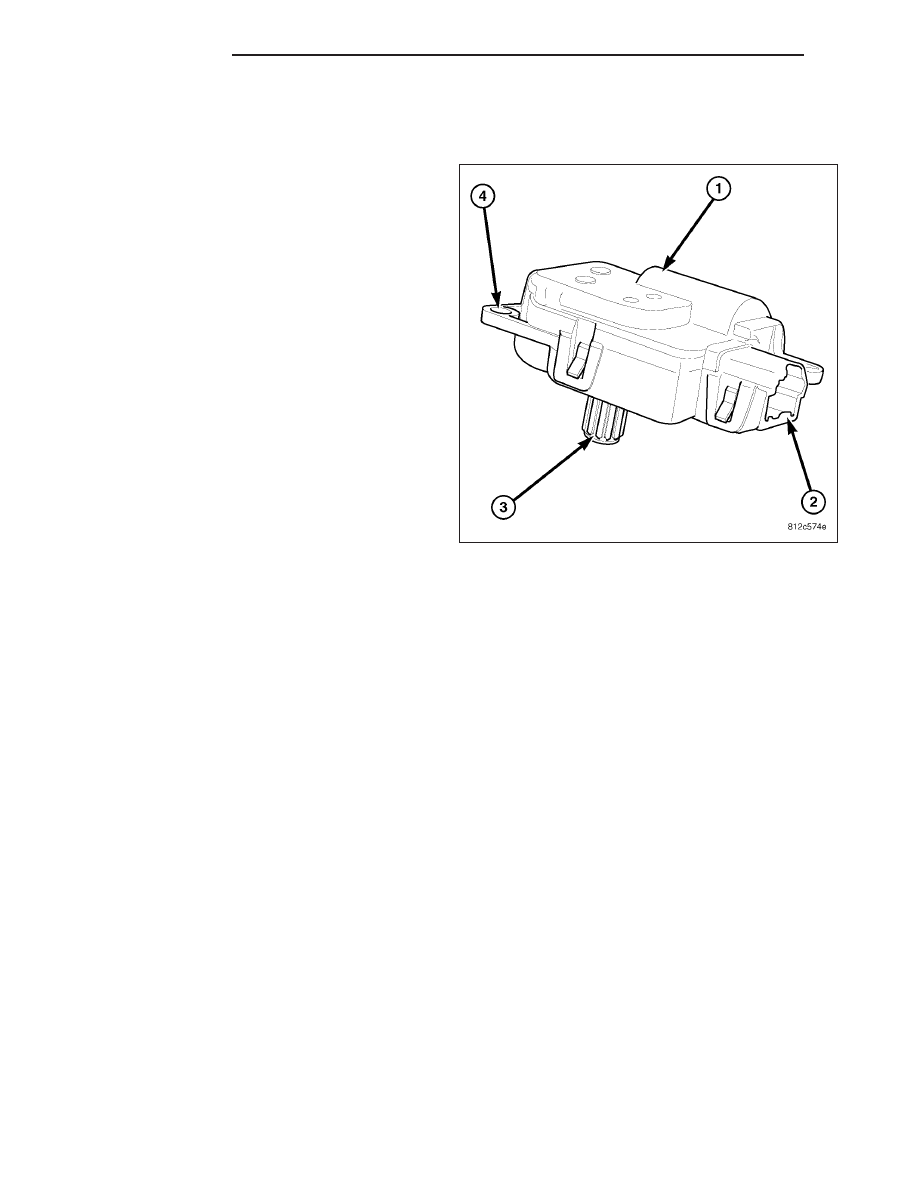Content .. 2325 2326 2327 2328 ..
Chrysler 300/300 Touring/300C, Dodge Magnum. Manual - part 2327

ACTUATOR-MODE DOOR
DESCRIPTION
The mode door actuator (1) is a reversible, 12–volt
direct current (DC), servo motor. The mode door
actuator is located on the driver side end of the HVAC
air distribution housing, close to the instrument panel.
The mode door actuator is mechanically connected to
the floor, defrost/demist and the panel-air doors.
The mode door actuator is interchangeable with the
actuators for the blend-air door(s) and the recircula-
tion-air door. Each actuator is contained within an
identical black molded plastic housing with an integral
wire connector receptacle (2). Each actuator also has
an identical output shaft with splines (3) that connect it
to its door linkage and three integral mounting tabs (4)
that allow the actuator to be secured to the HVAC
housing. The mode door actuator does not require
mechanical indexing to the mode-air doors, as it is
electronically calibrated by the A/C-heater control.
OPERATION
The mode door actuator is connected to the A/C-heater control through the vehicle electrical system by a dedicated
two-wire lead and connector of the HVAC wire harness. The mode door actuator can move the floor, defrost/demist
and the panel-air doors in two directions. When the A/C-heater control pulls the voltage on one side of the motor
connection high and the other connection low, the mode-air doors will move in one direction. When the A/C-heater
control reverses the polarity of the voltage to the motor, the mode-air doors moves in the opposite direction.
When the A/C-heater control makes the voltage to both connections high or both connections low, the mode-air
doors stop and will not move. The A/C-heater control uses a pulse-count positioning system to monitor the operation
and relative position of the mode door actuator and the mode-air doors. The A/C-heater control learns the mode-air
doors stop position during the calibration procedure and will store a diagnostic trouble code (DTC) for any problems
it detects in the mode door actuator circuits.
(Refer to 24 - HEATING & AIR CONDITIONING - DIAGNOSIS AND TESTING) and to 24 - HVAC Electrical Diag-
nostics for more information.
The mode door actuator cannot be adjusted or repaired and, if faulty or damaged, it must be replaced.
REMOVAL
WARNING: On vehicles equipped with airbags, disable the airbag system before attempting any steering
wheel, steering column, or instrument panel component diagnosis or service. Disconnect and isolate the
negative battery (ground) cable, then wait two minutes for the airbag system capacitor to discharge before
performing further diagnosis or service. This is the only sure way to disable the airbag system. Failure to
take the proper precautions could result in accidental airbag deployment and possible personal injury or
death.
24 - 342
CONTROLS
LX